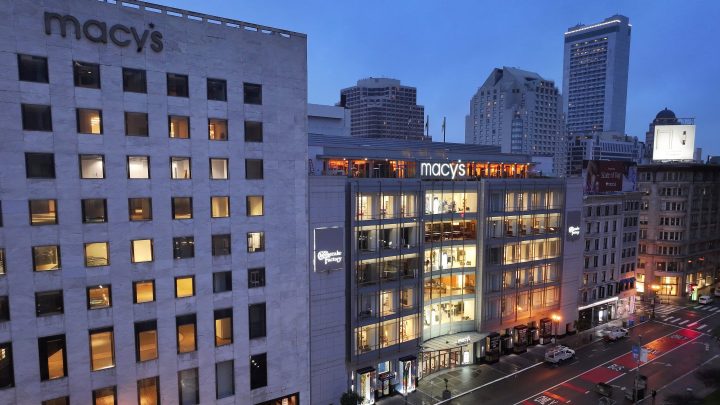
Macy’s isn’t facing a retail apocalypse. It’s facing a shrinking middle class.
Macy’s isn’t facing a retail apocalypse. It’s facing a shrinking middle class.

Back in the day, the New York Macy’s had a department store rival just down the street called Gimbels. In the early 20th century, the two vied for a particular kind of customer.
“The white, middle-class consumer,” said Vicki Howard, a historian and author of “From Main Street to Mall.” After World War II, that target demographic grew and moved to the suburbs. “And so shopping malls chased those suburban consumers,” she said.
But while department stores were growing, their target market was quietly shrinking. In 1971, 60% of Americans were in the middle class. Today, only half are.
That’s a problem for retailers like Macy’s, which announced it’s closing 150, or nearly a third, of its stores, in its latest attempt to turn things around. The retailer is just one of many that have been downsizing, including Gap, Foot Locker and Bed Bath & Beyond.
The fading of so many household names is often dubbed the retail apocalypse. There’s plenty to blame, like the internet, Amazon and two-day shipping. But the slower, steadier threat of the shrinking middle class has been eating away at retailers since long before these modern disruptors came on the scene.
“If your business is selling middle-market apparel in a 200,000-square-foot box, you’re struggling,” said Brandon Svec, a retail analyst at CoStar, a commercial real estate research group. Meanwhile, luxury and discount retailers are growing alongside the ranks of lower- and upper-income Americans, which Svec calls the barbell effect.
“You’re seeing a lot of growth at the top, you’re seeing a lot of growth at the bottom,” he said, “and a hollowing out at the middle.”
In 2022, 95% of luxury brands increased profits. Meanwhile, dollar stores are thriving. Dollar General plans to open 800 stores this year.
“And in a lot of ways, it’s the shrinking middle class,” said Svec. “But it’s also the shifting value proposition sought out by the middle class.”
The middle class isn’t just getting smaller. The people who are left in it are shopping differently, especially as necessities like groceries eat up more of their paychecks. Walmart says that in the last couple of years it’s gained more middle- and high-income shoppers. Consumers are trading up and down.
“They’re buying their household supplies and, you know, maybe underwear at Walmart in order to save enough money to take a luxury vacation or buy a Louis Vuitton handbag,” said Doug Stephens, founder of the consultancy Retail Prophet.
Increasingly, these extremes are shaping retail and forcing brands to reinvent themselves. Macy’s plans to invest more in its upscale brands, Bloomingdale’s and Bluemercury, as well as its discount brand, Macy’s Backstage. The divide is also present in the grocery business. High-end Whole Foods and budget-focused Aldi are both growing.
“That middle ground no longer really exists,” said Stephens. “And if it does, it’s tenuous or unremarkable. Why bother?”
He said the legacy brands built for those consumers need a new legacy to survive.
“It began with the baby boomer, and it’s hitting its denouement with the decline of the baby boomer spending,” he said. “And so the market’s trying to figure itself out now.”
There’s a lot happening in the world. Through it all, Marketplace is here for you.
You rely on Marketplace to break down the world’s events and tell you how it affects you in a fact-based, approachable way. We rely on your financial support to keep making that possible.
Your donation today powers the independent journalism that you rely on. For just $5/month, you can help sustain Marketplace so we can keep reporting on the things that matter to you.

















